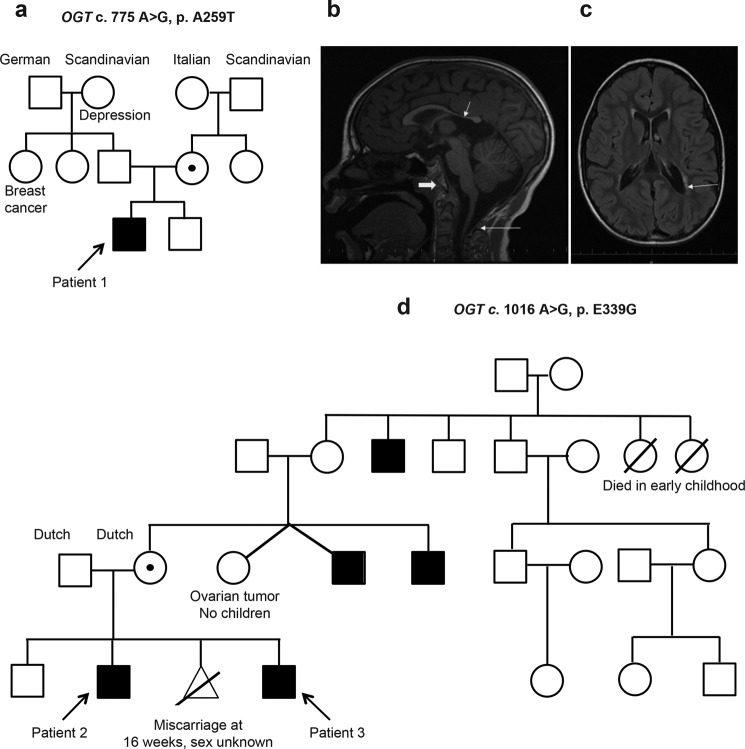Figure 1.
Pedigrees and phenotypes of the patients. a, three-generation pedigree of Patient 1 (with OGT c.775 G>A, p.A259T). Proband is identified by the arrow. Circles denote females; circles with dots, carrier females confirmed using exome sequencing or Sanger sequencing; open squares, unaffected males; and closed squares, males with XLID. b, MRI of brain of Patient 1 at 7 years of age. Sagittal T1 image reveals extremely thin corpus callosum, particularly the posterior body and splenium (short thin arrow), short appearing clivus (thick arrow), and relatively hypoplastic posterior arch of first cervical vertebra (long thin arrow). c, MRI of brain at of Patient 1 at 7 years of age. Axial T2 FLAIR image reveals mild ventriculomegaly (arrow). d, four-generation pedigree of Patients 2 and 3 (with OGT c.1016 A>G, p.E339G). Probands are identified by arrows, and diagram has same coding as in a.

